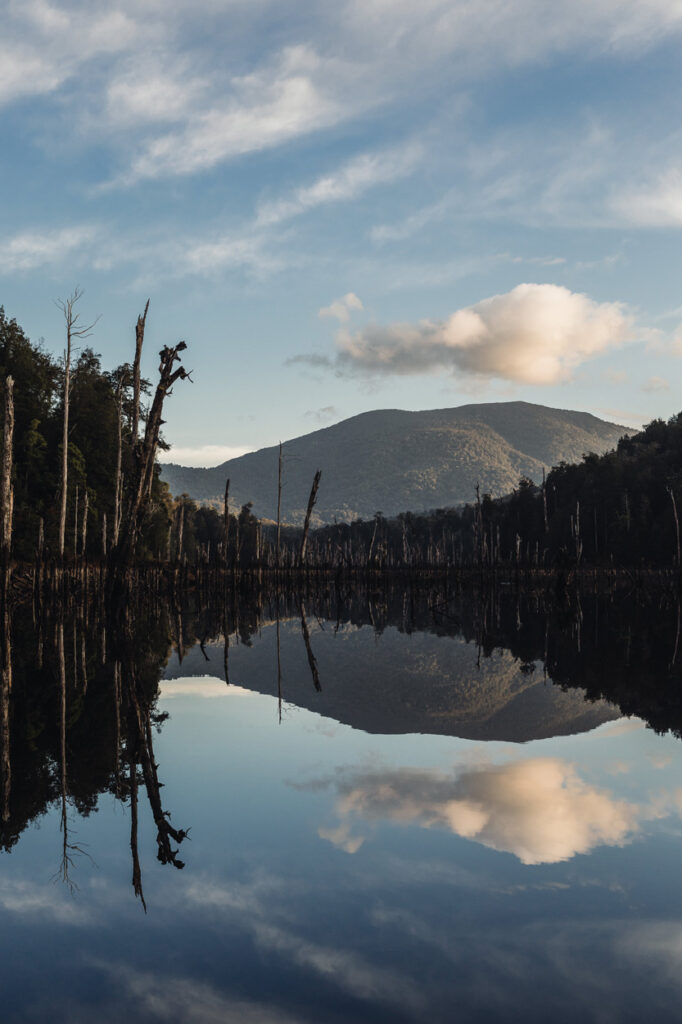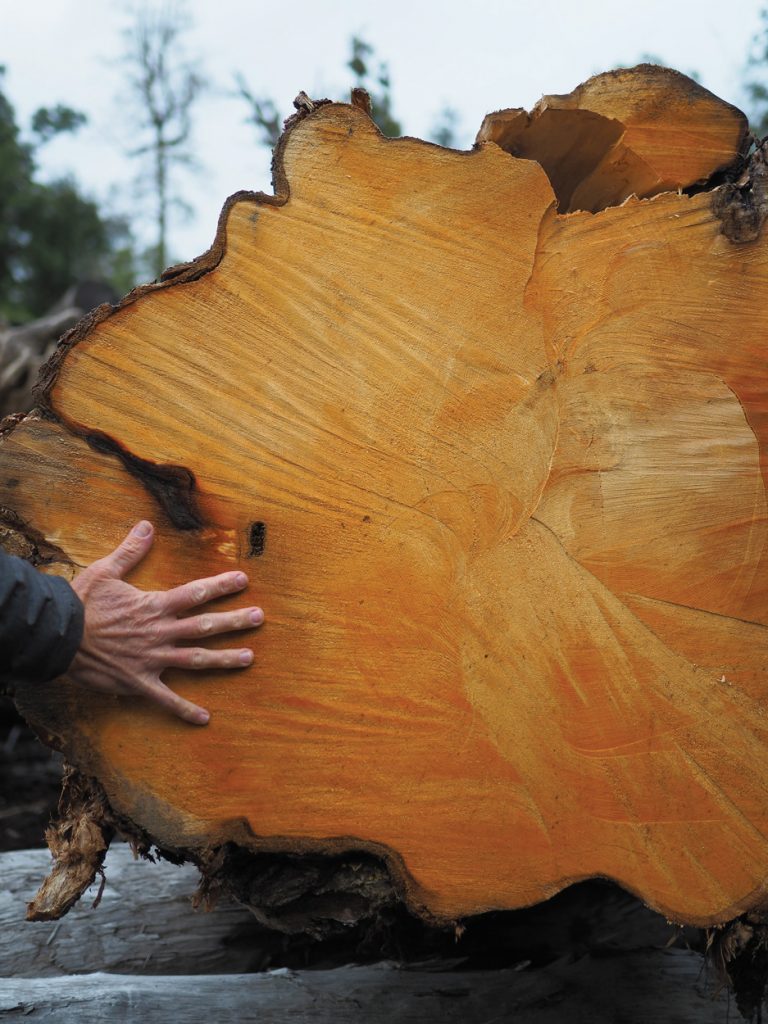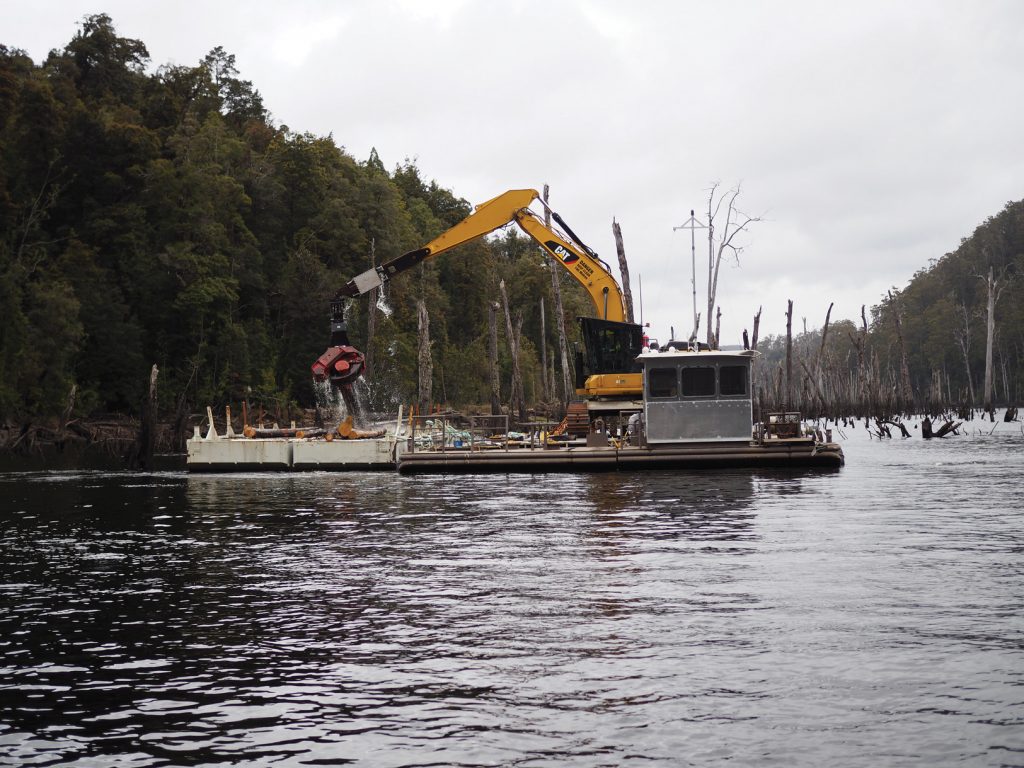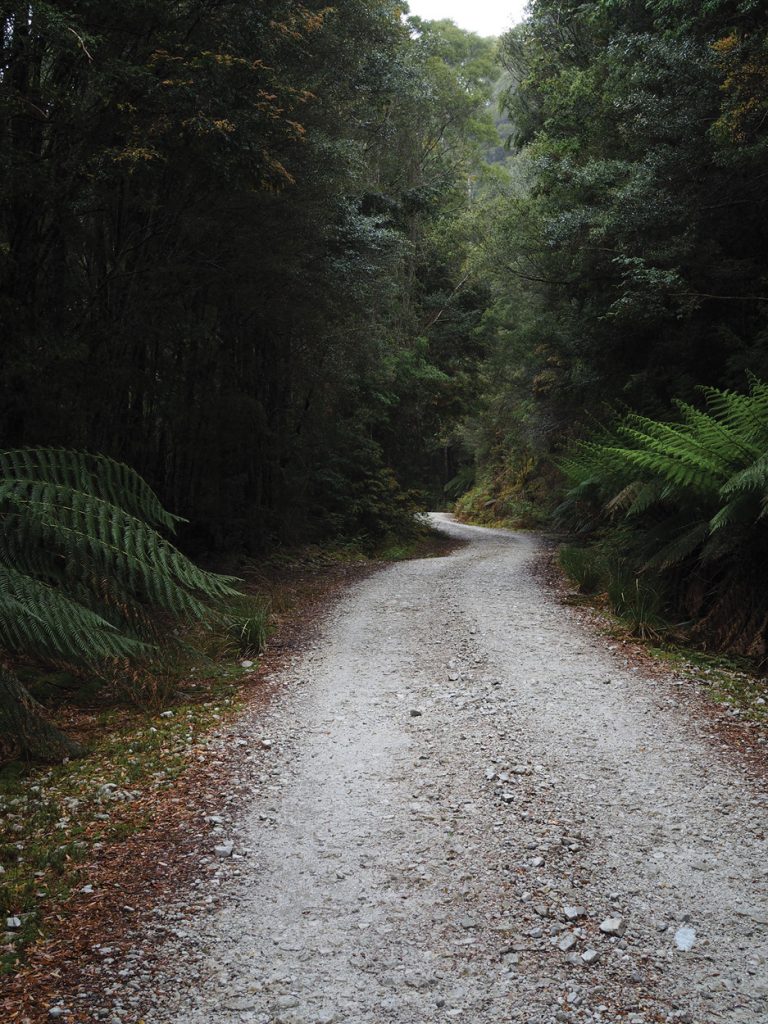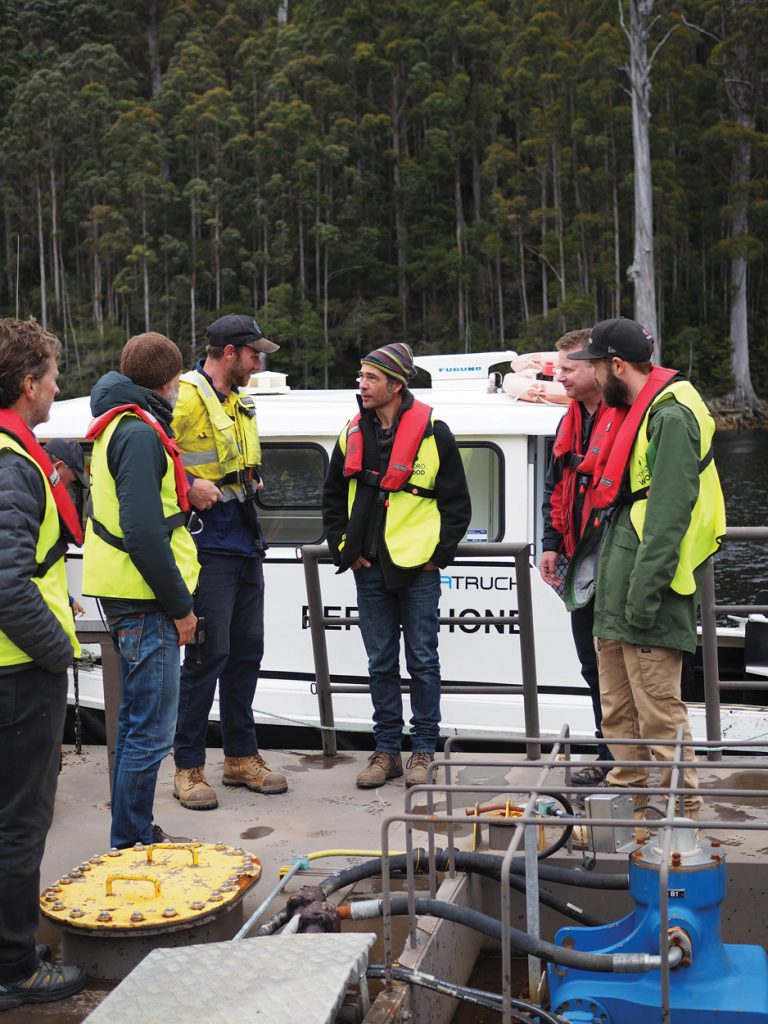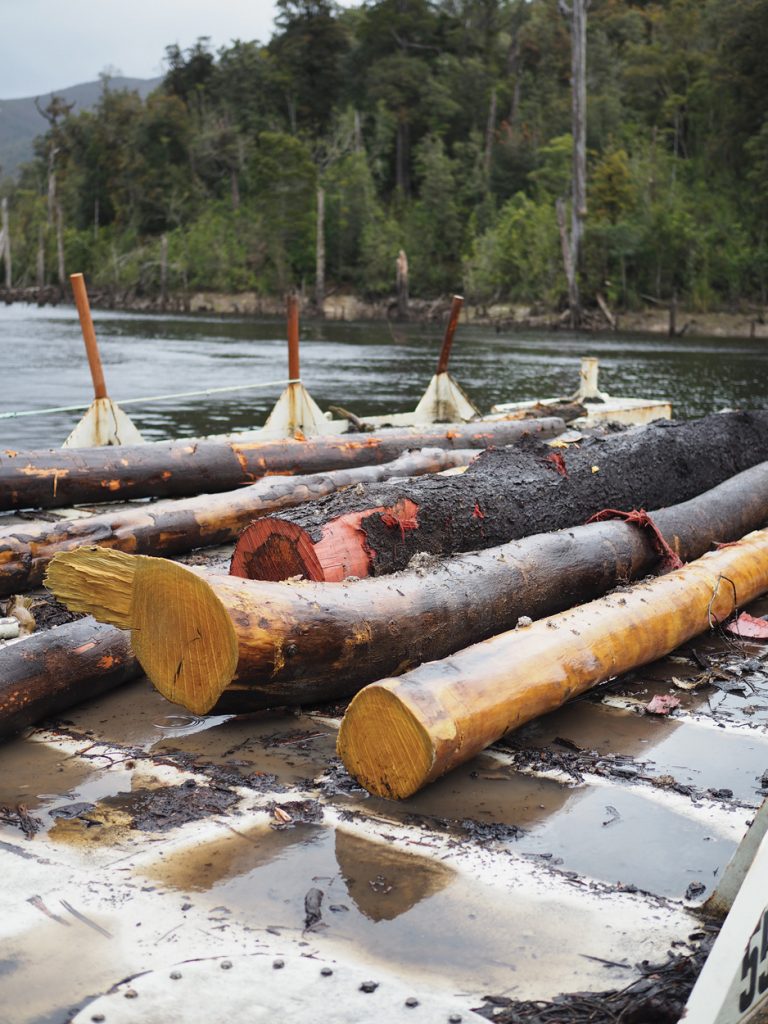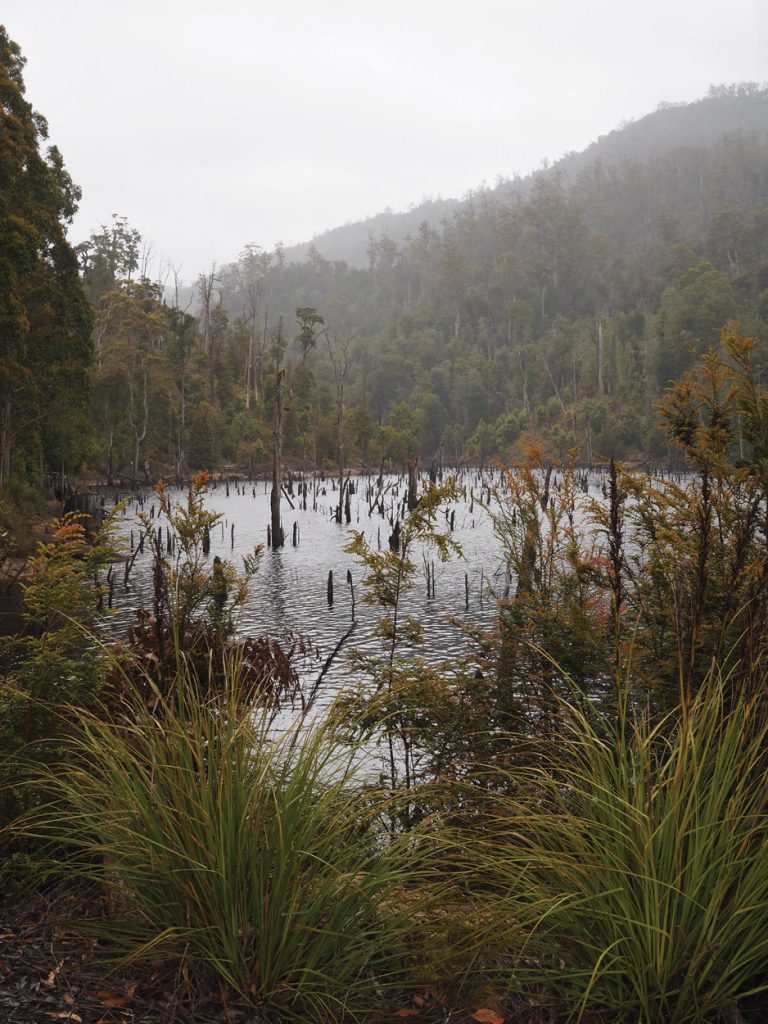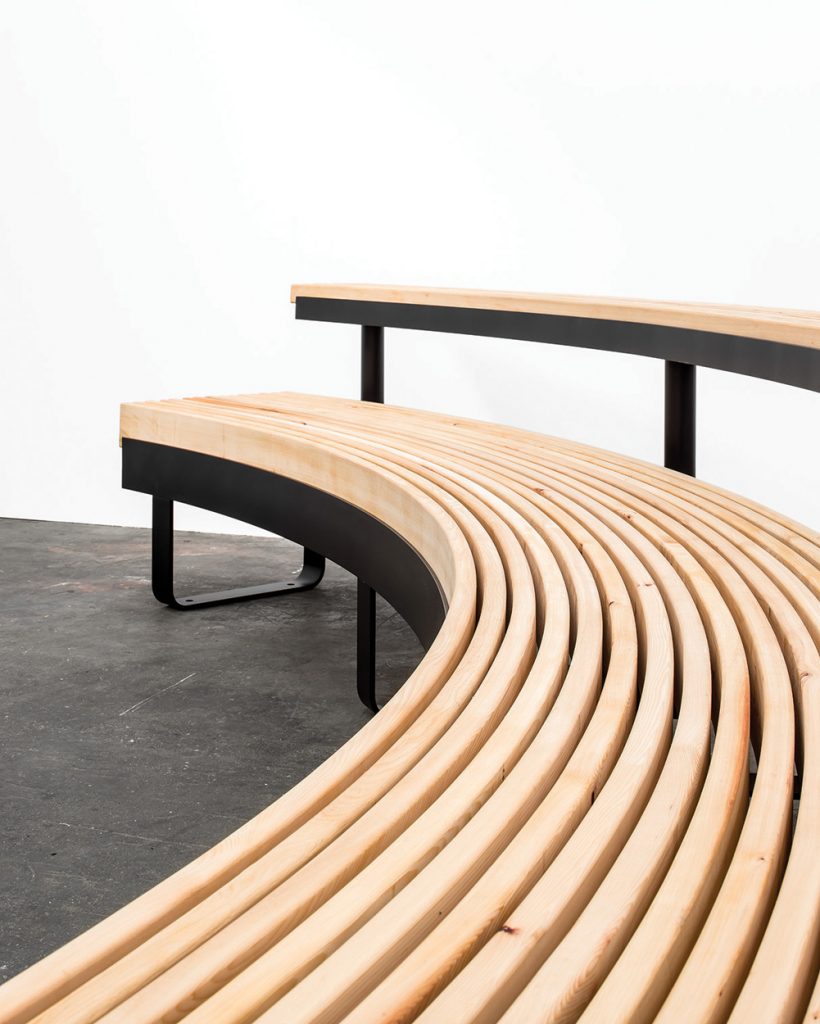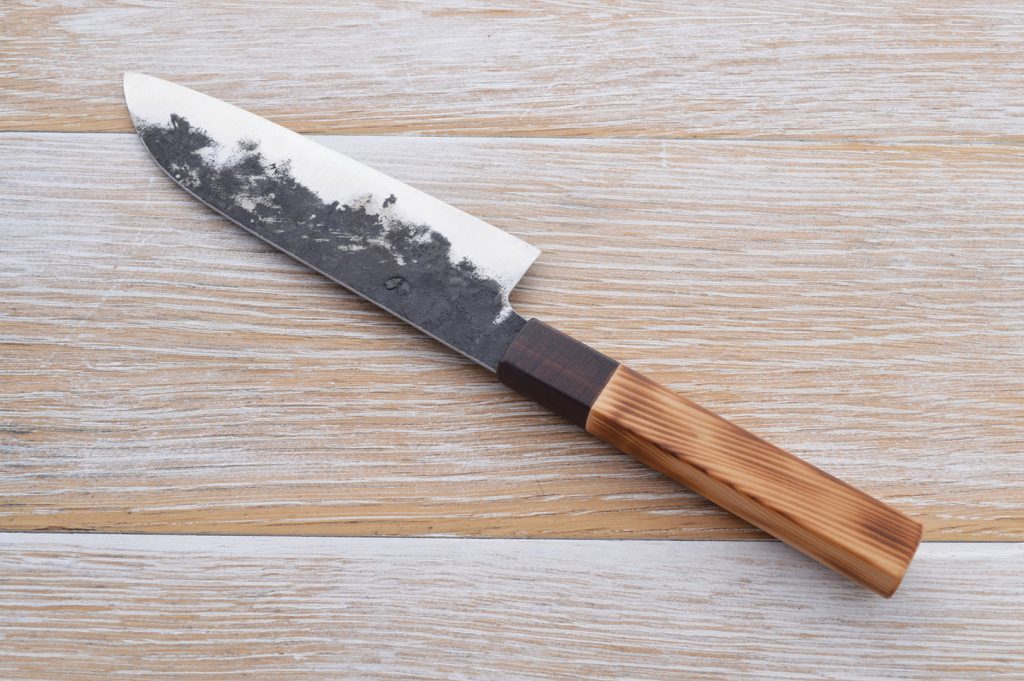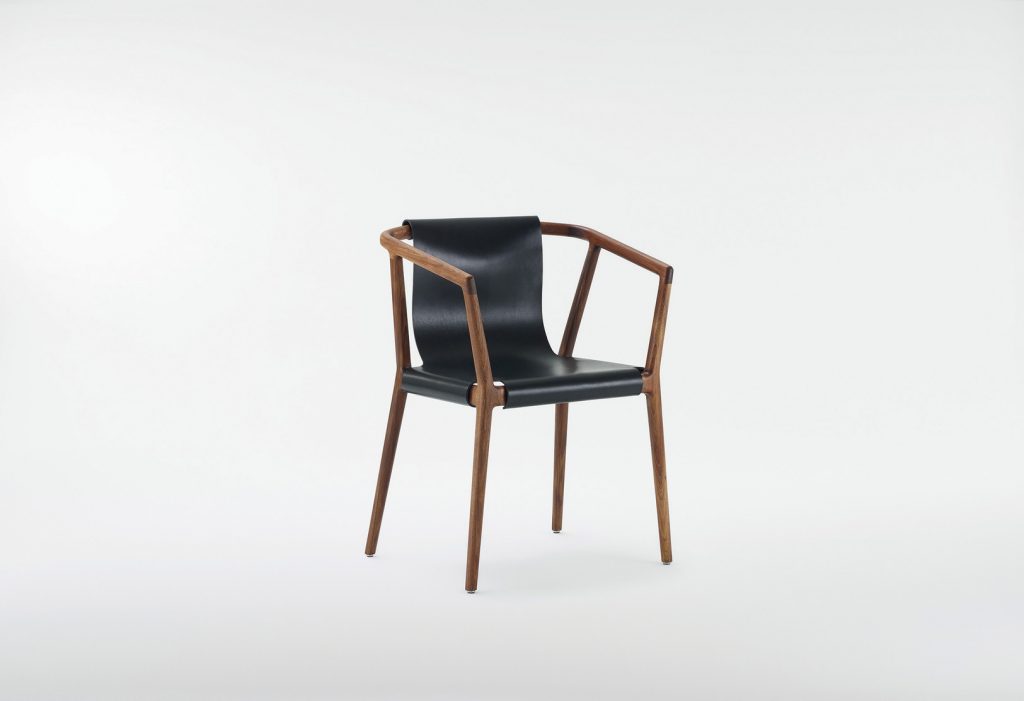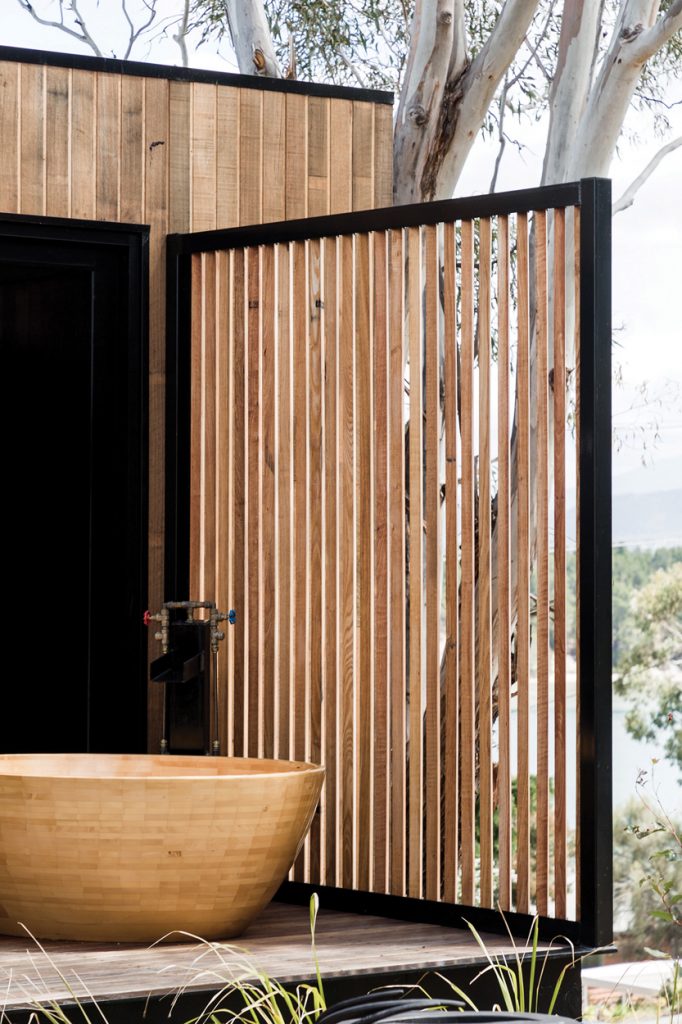Into the Lake
Hydrowood's is a story of experimentation and innovation, set against a backdrop of misty forests on Tasmania’s wild and remote West Coast.
Pilot and co-director of consultancy firm SFM, Dave Wise regularly flew over the timbered river valleys flooded in the 1980s by Hydro Tasmania and wondered what could be recovered from the drowned forests. Many moons later, after feasibility studies and funding from state and Federal governments, Dave and business partner and botanist Andrew Morgan launched Hydrowood. The brand is a marketing dream, recovering highquality timber from beneath the surface of Lake Pieman without requiring logging in Tasmania’s native forest.
A variety of timber is harvested and due to the depth, pressure and lack of light and oxygen, the wood does not rot. It is estimated there is 150 000-cubic-metres of product in the 60-kilometre-long Lake Pieman including celery top pine, sassafras, Tasmanian oak, myrtle and blackwood. Huon pine logs are rare and have typically been washed down from deep ravines and make up less than one per cent of the yield. After three years of operation, a total of 5000-cubic-metres of timber has been harvested. It is a deliberately conservative approach as the timber needs time to dry before being milled and as Andrew points out: “We are not keen on hitting it really hard. We want to maintain a nice steady supply that keeps it special.”
The end-use demand for timber has evolved in the last five years . Not only are projects such as the Living Building Challenge highlighting the use of timber in good design, there is a real interest in the products’ sources. Andrew notes: “People do care about provenance now. They want to know where their food, where their timber has come from. ”The perception of value has changed significantly in 20 years. For exam ple, celery top pine was used as railway sleepers in the 1980s and w as seen as the poor man’s Huon pine. It is now a premium product for use in furniture.
Tasmanian oak (mountain ash), branded as Hydrowood oak, was not expected to be a big seller – yet is now the largest volume sold to the mainland. Because the timber has been submerged for 30 years, the sap has been forced out and replaced with water. Once properly dried, the mill is able to back cut (as opposed to quarter sawn) and deliver dressed timber which does not cup as it ages.
Hydrowood timber is used by numerous Tasmanian designers for a range of products. Simon Ancher initially dealt with Dave and Andrew during the feasibility study whilst he was lecturing at university. He has since formed his own design studio and become an advocate for the company’s timber range, producing iconic pieces including his well-publicised couch, whiskey cabinet and dining settings.
Dave and Andrew’s approach is a great example of tackling an opportunity with progressive eyes. Their toil and inventive, entrepreneurial spirit have delivered a premium product for others to showcase their own creativity. It is a theme that can be followed across other industries time and again as new opportunities are created or societal problems tackled with design and innovation.
